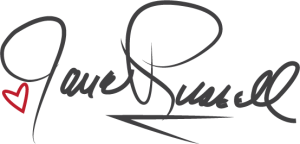Career
In 1940, Russell was signed to a seven-year contract by film mogul Howard Hughes, and made her motion-picture debut in The Outlaw (1943), a story about Billy the Kid that went to great lengths to showcase her voluptuous figure. The movie was completed in 1941, but it was not released until 1943 in a limited release. Problems occurred with the censorship of the production code over the way her ample cleavage was displayed. When the movie was finally passed, it had a general release in 1946. During that time, she was kept busy doing publicity and became known nationally. Contrary to countless incorrect reports in the media since the release of The Outlaw, Russell did not wear the specially designed underwire bra that Howard Hughes had designed and made for her to wear during filming. According to Jane’s 1985 autobiography, she said that the bra was so uncomfortable that she secretly discarded it and wore her own bra with the cups padded with tissue and the straps pulled up to elevate her breasts.
In 1947, Russell attempted to launch a musical career. She sang with the Kay Kyser Orchestra on radio and recorded two singles with his band, “As Long As I Live” and “Boin-n-n-ng!” She also cut a 78 rpm album that year for Columbia Records, Let’s Put Out the Lights, which included eight torch ballads and cover art that included a diaphanous gown that for once put the focus more on her legs than on her breasts. In a 2009 interview for the liner notes to another CD, Fine and Dandy, Russell denounced the Columbia album as “horrible and boring to listen to.” It was reissued on CD in 2002, in a package that also included the Kyser singles and two songs she recorded for Columbia in 1949 that had gone unreleased at the time. In 1950, she recorded a single, “Kisses and Tears,” with Frank Sinatra and The Modernaires for Columbia.
1950s, She appeared in two movies opposite Robert Mitchum: His Kind of Woman (1951) and Macao (1952). Other co-stars included Frank Sinatra and Groucho Marx in the comedy Double Dynamite (1951); Victor Mature, Vincent Price and Hoagy Carmichael in The Las Vegas Story (1952); Jeff Chandler in Foxfire (1955); and Clark Gable and Robert Ryan in The Tall Men (1955).
In Howard Hughes’s RKO production The French Line (1954), the movie’s penultimate moment showed Russell in a form-fitting one-piece bathing suit with strategic cutouts, performing a then-provocative musical number titled “Lookin’ for Trouble”. In her autobiography, Russell said that the revealing outfit was an alternative to Hughes’ original suggestion of a bikini, a very racy choice for a movie costume in 1954. Russell said that she initially wore the bikini in front of her “horrified” movie crew while “feeling very naked.”
In October 1957, she debuted in a successful solo nightclub act at the Sands Hotel in Las Vegas. She also fulfilled later engagements in the U.S., Canada, Mexico, South America, and Europe. A self-titled solo LP was issued on MGM Records in 1959. It was reissued on CD in 2009 under the title Fine and Dandy, and the CD included some demo and soundtrack recordings, as well. “I finally got to make a record the way I wanted to make it,” she said of the MGM album in the liner notes to the CD reissue. In 1959, she debuted with a tour of Janus in New England, performed in Skylark and also starred in Bells Are Ringing at the Westchester Town House in Yonkers, New York.
In 1971, she starred in the musical drama Company, making her debut on Broadway in the role of Joanne, succeeding Elaine Stritch. Russell performed the role of Joanne for almost six months. Also in the 1970s, she started appearing in television commercials as a spokeswoman for Playtex “‘Cross-Your-Heart Bras’ for us full-figured gals”, featuring the “18-Hour Bra”, still one of International Playtex’s best-known products even as of early March 2011. She wrote an autobiography in 1985, Jane Russell: My Path and My Detours. In 1989, she received the Women’s International Center Living Legacy Award.
